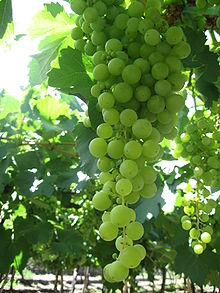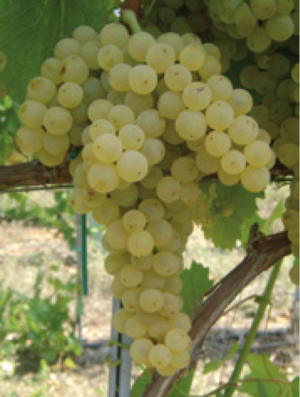
Mention Tuscany and most wine drinkers think of Chianti, or maybe Brunello di Montalcino, or Vino Nobile di Montepulciano. There is a common thread running through this classic trio of Tuscan red wines: Sangiovese.
Sangiovese has been the main variety for years along the narrow strip of land on Tuscany's Maremma coast. But since 1995, Sangiovese has had to share the top spot, mainly in Bolgheri, with Cabernet Sauvignon and Merlot, red grapes more at home in Bordeaux than Tuscany.
Before 2011, production
of Bolgheri wine was mostly blends of Cabernet Sauvignon and Merlot,
supplemented with Syrah and Cabernet Franc up
to 50% in the blend. The blending approach was soon changed with the introduction of Sassicaia, and a new concept to be called Super Tuscan.
Sassicaia, Bolgheri's noteworthy Cabernet Sauvignon-based Super Tuscan, is owned by the Marchese Incisa della Rocchetta, who was the first to plant Cabernet Sauvignon in Bolgheri in the 1940's. Although it seems quaint today, the Marquis' goal was to have a house wine, not to someday make an Italian red wine fashioned after a great Bordeaux.
The
Bolgheri DOC was created in 1983, but oddly, only for white and pink wine.
It took another 11 years for the DOC to be amended to include red wine. Then, in 1994, the Sassicaia zone was established.
Sassicaia,
a blend of 85% Cabernet Sauvignon and 15% Cabernet Franc, is made in
the Bordeaux style, aged in French oak barriques, and marketed by
Antinori. The barrique bordelaise, often called the "chateau" barrel, holds 59 gallons of wine.
Cabernet
Sauvignon, a decidedly non-Italian grape has, never-the-less, brought fame and fortune
to the coastal area, as well as the Marchese Rocchetta. Sassicaia retails for $300.
Ornellaia, Bolgheri's other prestigious Super-Tuscan, is made by Frescobali, a major landholder in Tuscany. Until 2000, Frescobaldi concentrated on Tuscany, then the wine company branched out first to Friuli, then in 2004, it purchased the Ornellaia estate in northern Bolgheri.
The name Ornellaia means "ash tree," common in the northern part of Bolgheri. Made in the Bordeaux style, the wine is a blend of Cabernet Sauvignon and Merlot, with small percentages of Cabernet Franc and Petit Verdot, then aged in French oak barriques. Although Ornellaia is a Super Tuscan, priced at about $250, it stands on its own as one of Tuscany's best-known Cabernet Sauvignons.
Primarily,
soils in Bolgheri and Bordeaux are quite different, as are basic wine
making techniques. Even though both Sassicaia and Ornellaia are made from the same
grapes, they have different flavors and structures. The percentage of Cabernet Sauvignon is higher in Sassicaia, so the dominant flavor is black fruits. Merlot provides a heightened presence of fruitiness and softer tannins, while the addition of Cabernet Franc in Ornellaia gives the wine a hint of blueberry.
Tignanello, a Chianti Classico, not from Bolgheri, is usually included in the top three of Super Tuscan wines. Owned by Marchesi Antinori, Tignanello, a popular blend of Sangiovese, Cabernet Sauvignon and Cabernet Franc, is classified as an IGT Sangiovese. Tignanello is the first Sangiovese to be aged in barriques and the first Chianti Classico to not include white grapes in the blend.
Tignanello has the subtle scent of cooked tomatoes, with a distinct tart pie cherry flavor, characteristics of Sangiovese dominated blend, and distinctly different from Cabernet Sauvignon. Thus, Tignanello, about $175, is a different style of Super Tuscan. Super Tuscan (or Supertuscan) is a term first used in the 1970s to describe a Bordeaux blend aged in barriques. Super Tuscans are IGT wines, which replaced vino da tavola in 1992.
Next post: California's "Other" Wine Regions
Leave a comment, without signing in to Google, at boydvino707@gmail.com.







